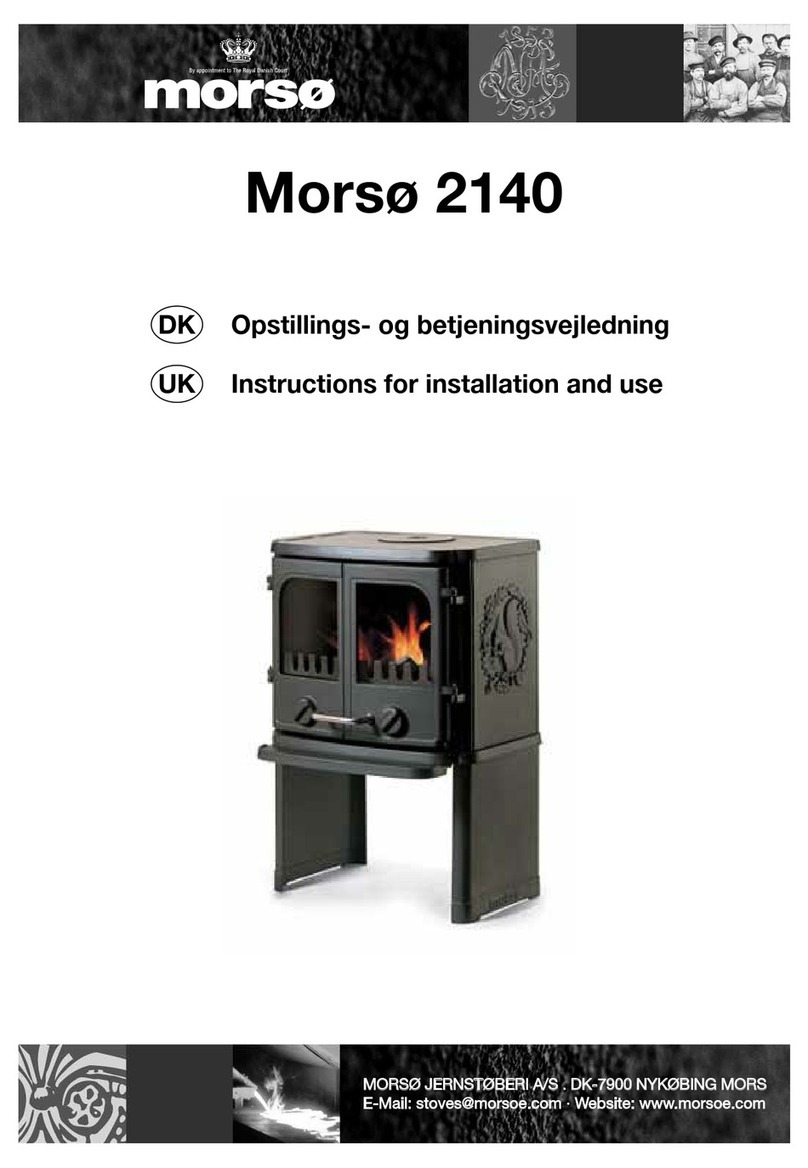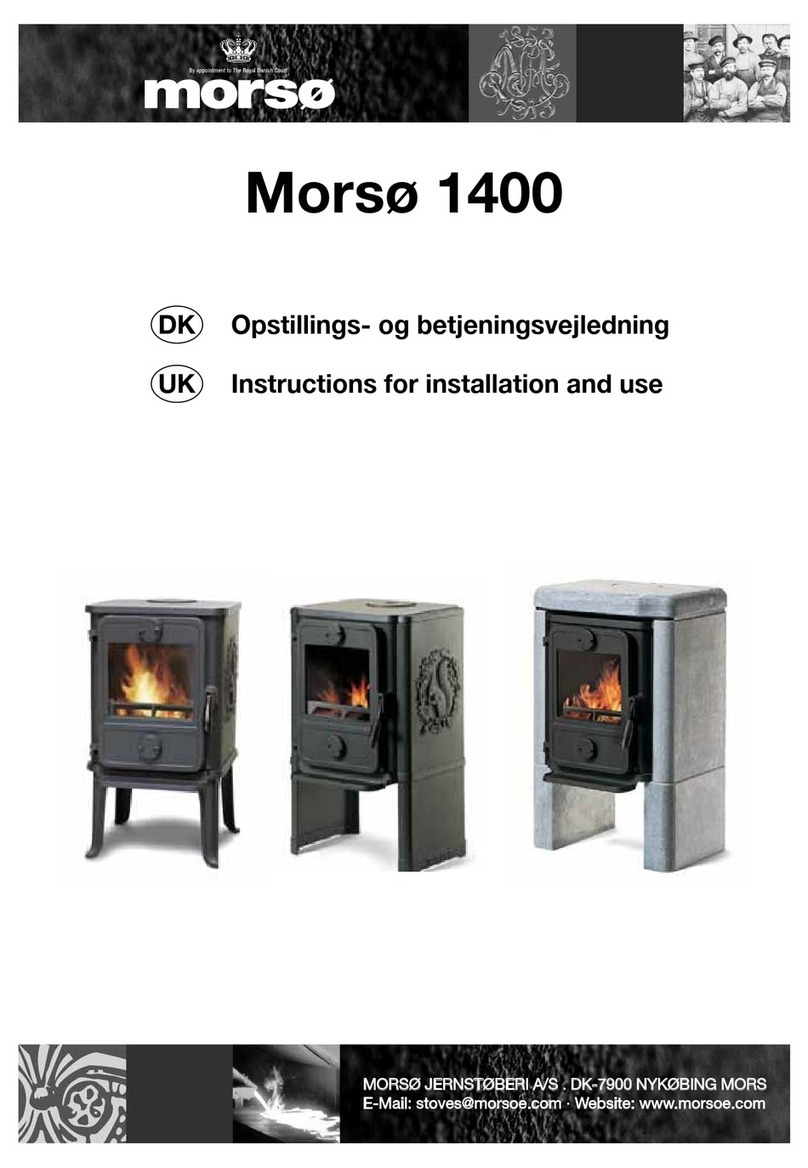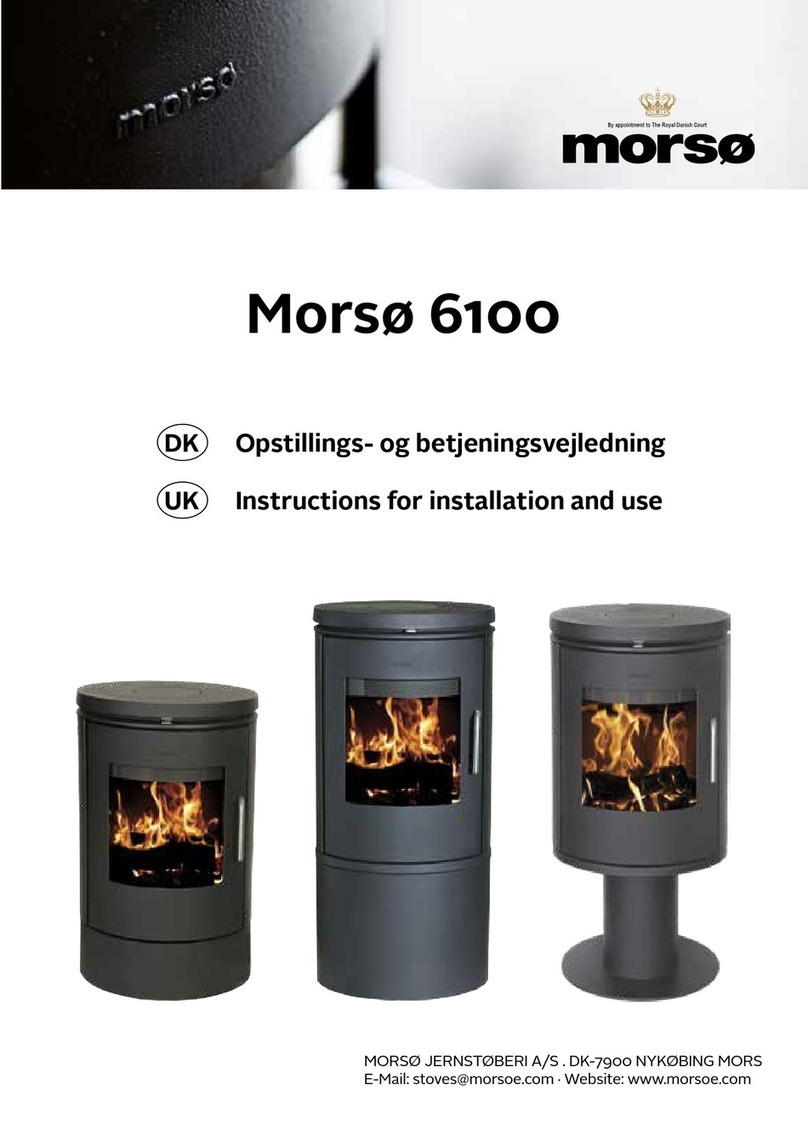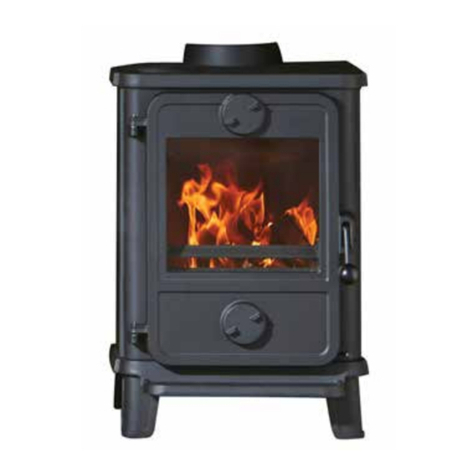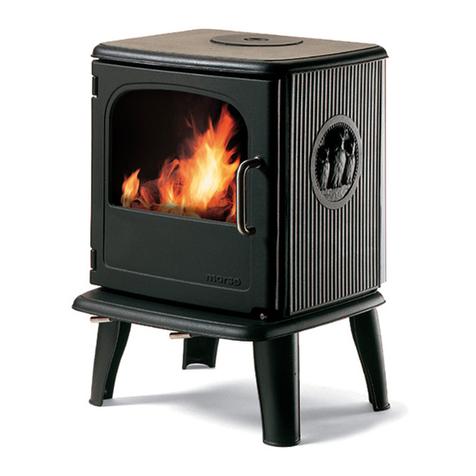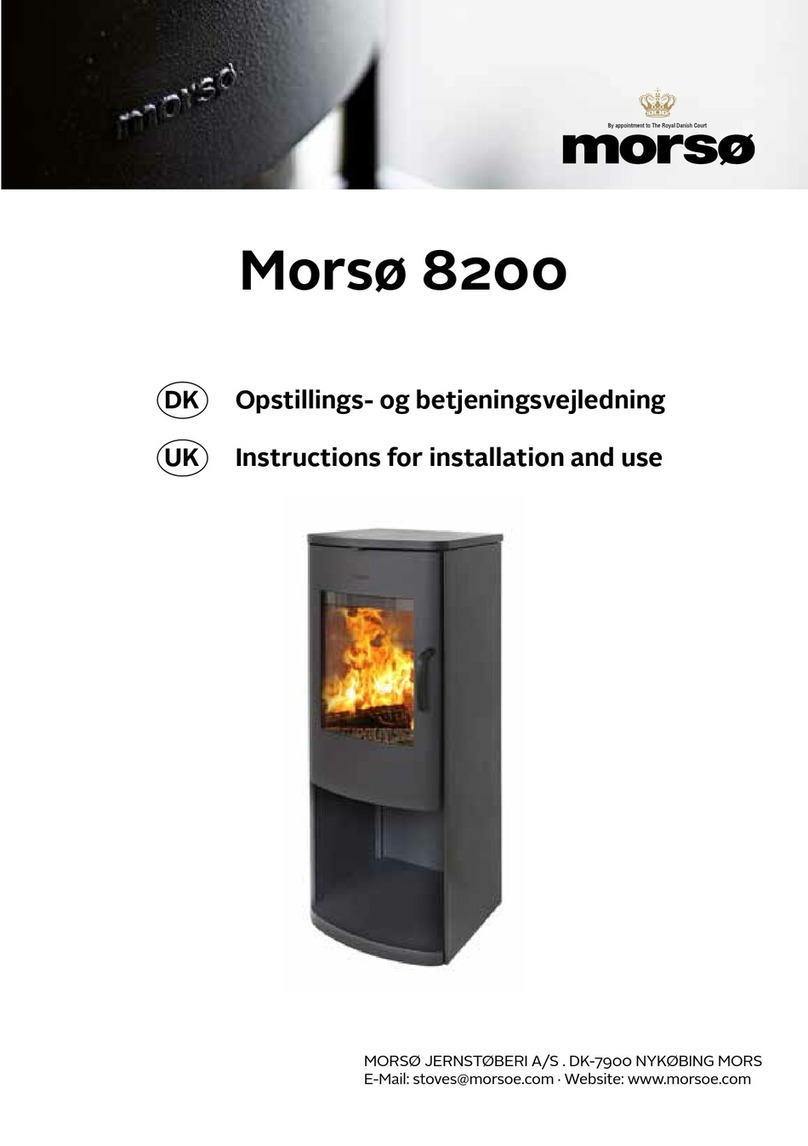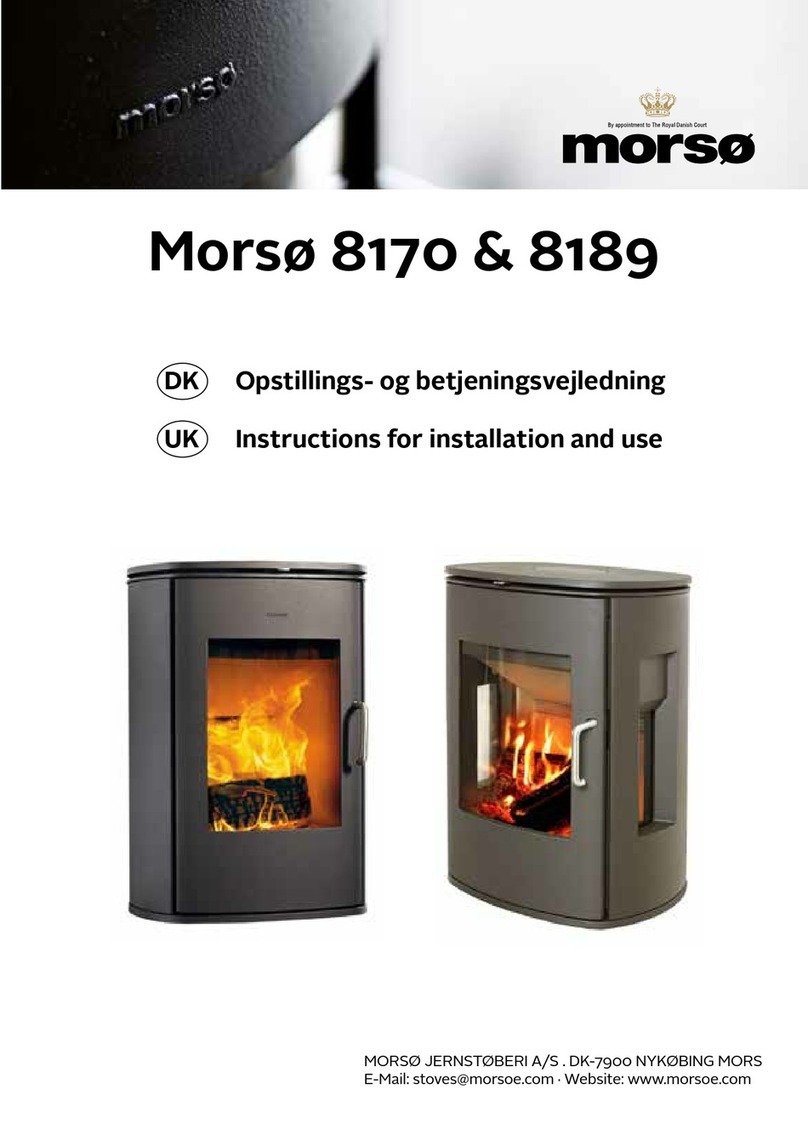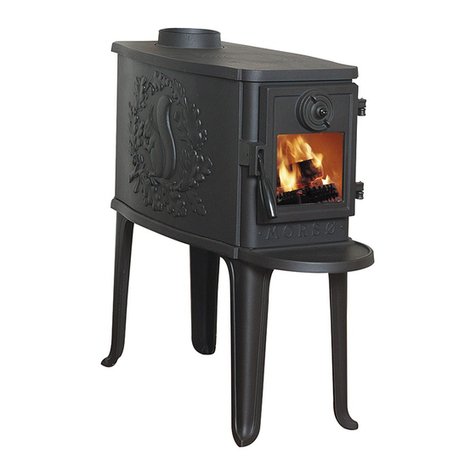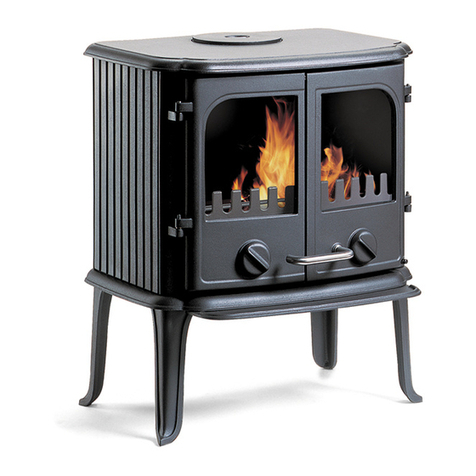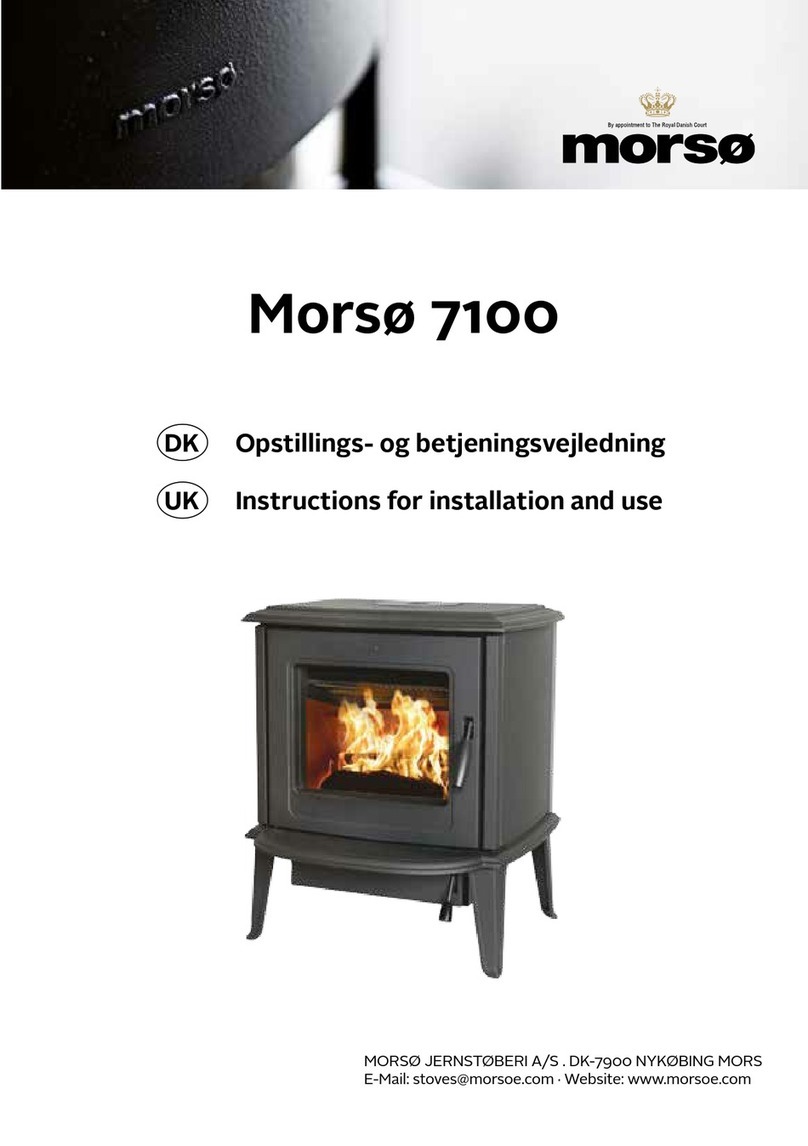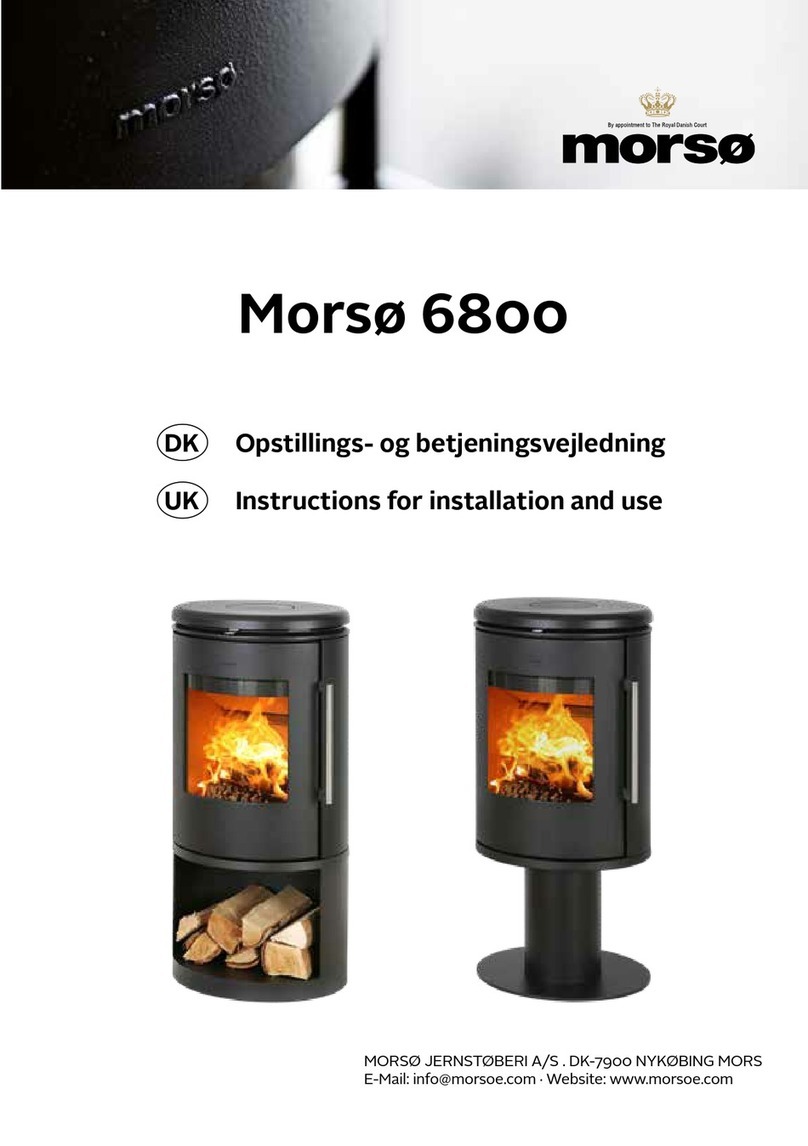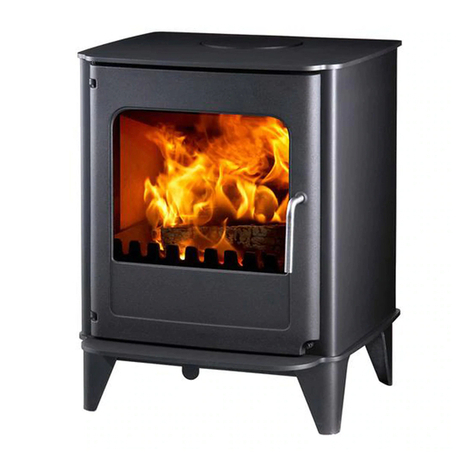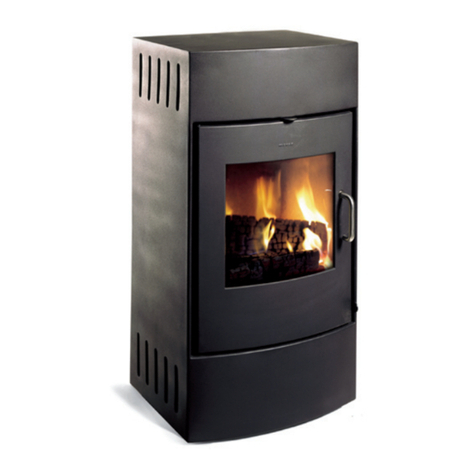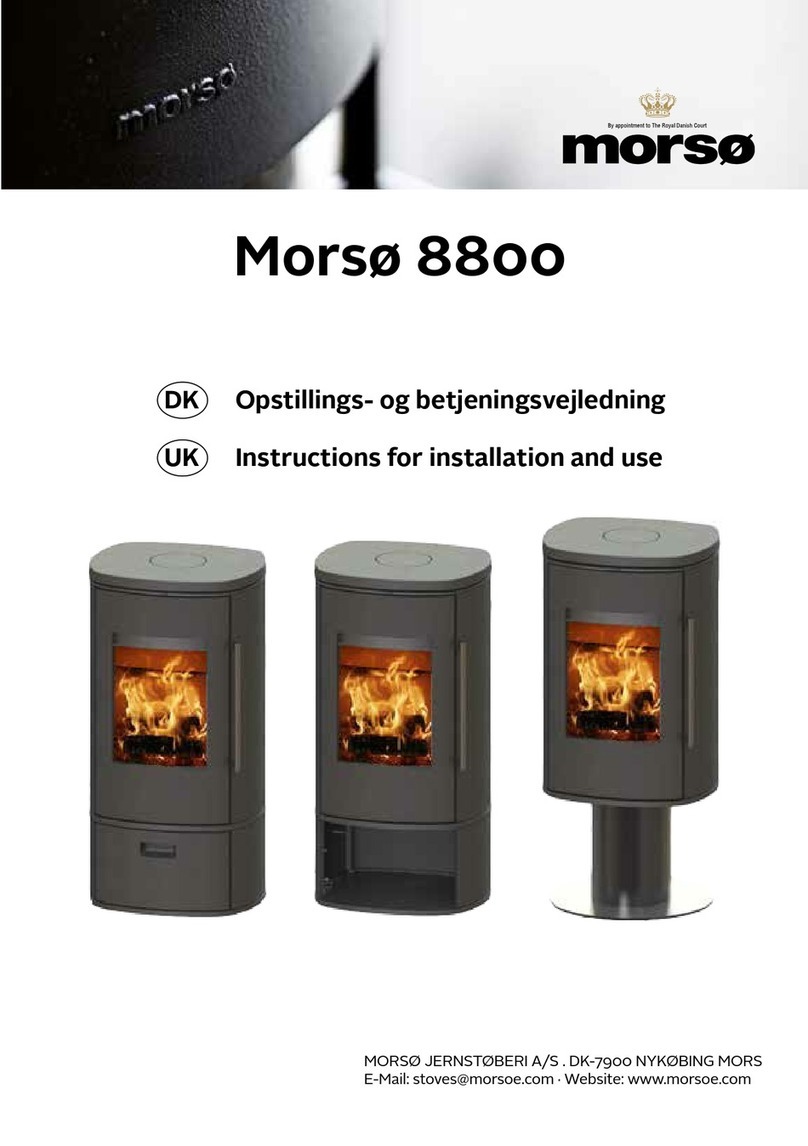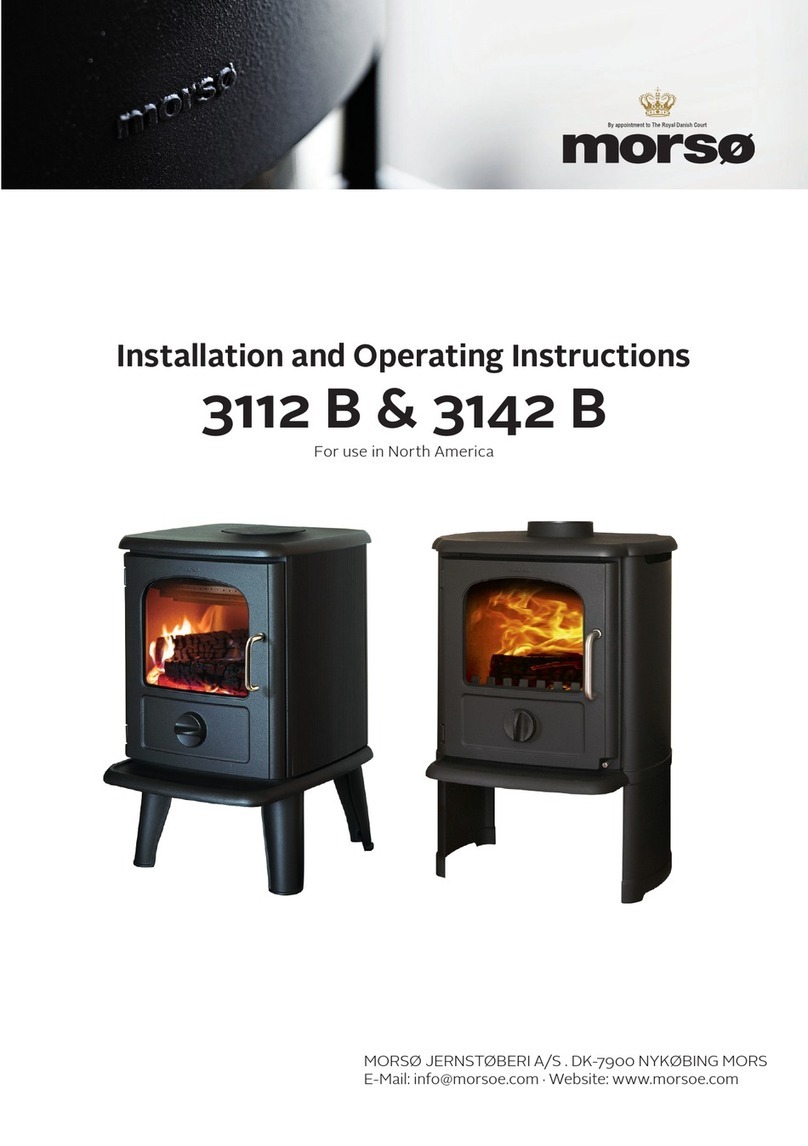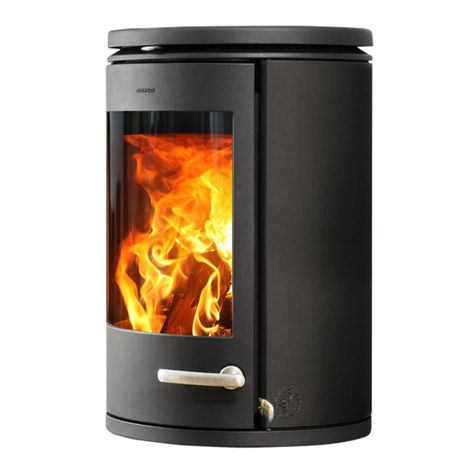1.3 Flue Connection
The stove is supplied from the factory with a ue collar tted to the top plate and a round
blanking plate blocking o the rear ue exit (behind the rear shield plate).
Use a 24 MSG black or blue chimney connector or listed double wall chimney connector. Re-
fer to local codes and the chimney manufacturer’s instructions for precautions required for
passing a chimney through a combustible wall or ceiling. Remember to secure the chimney
connector with a minimum of three screws to the product and to each adjoining section.
Where a rear ue installation is required, simply knock out the top steel plate in the rear heat
convection panel. This is best done by applying gentle hammer taps immediately onto the small
”bridges” in the circular cut-outs. Once the knock-outs have been removed unbolt the cast iron
blanking plate and install it into the top of the stove. The ue collar can then be bolted over the
rear ue outlet using the bolts and clamps provided.
The cast iron blanking plate can also function as an extra clean-out access whilst perform-
ing the annual cleaning service of the stove and chimney.
Wear gloves and protective eyewear when drilling, cutting or joining sections of chim-
ney connector.
1.4 Connection to the existing chimney
A chimney connector is the double-wall or single-wall pipe that connects the stove to the chim-
ney. The chimney itself is the masonry or prefabricated structure that encloses the ue. Chim-
ney connectors are used only to connect the stove to the chimney.
Double-wall connectors must be tested and listed for use with solid-fuel burning applianc-
es. Single-wall connectors should be made of 24 gauge or heavier gauge steel. Do not use
galvanized connector; it cannot withstand the high-temperatures that smoke and exhaust
gases can reach, and may release toxic furnes under high heat. The connector must be 6
inches (150mm) in diameter.
If possible, do not pass the chimney connector through a combustible wall or ceiling.
If passage through a combustible wall is unavoidable, refer to the sections on Wall Pass-
Throughs. Do not pass the connector through an attic, a closet or similar concealed space
when installing the chimney connectors.
It is important to keep the ue gases moving smoothly in the right direction. Do not vent
into a large void at this location; rather form one continuous section all the way up. Use mild
bends (e.g. 45º vs. 90º) rather than sharp angles where a change of direction is required. All
parts of the venting must be accessible for cleaning purposes.
In horizontal runs of chimney, maintain a distance of 18 inches from the ceiling. Keep it as
short and direct as possible, with no more than two 90 degree turns. Slope horizontal runs
of connector upward 1/4 inch per foot (20 mm per metre) going from the stove toward the
chimney. The recommended maximum length of a horizontal run is 3 feet (1 metre), and the
total length should be no longer than 8 feet (2.5 metres).
Information on assembling and installing connectors is provided by the manufacturer’s in-
structions exactly as you assemble the connector and attach it to the stove and chimney.
Be sure the installed stove and chimney connector are correct distances from near by
combustible materials. See the clearance paragraph page 8.
